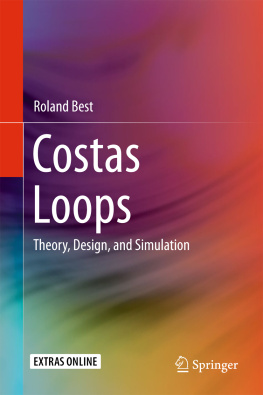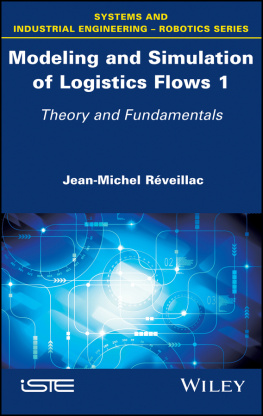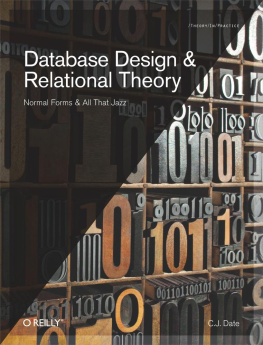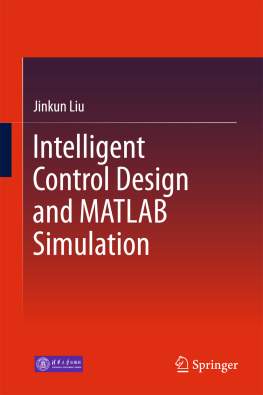Best - Costas Loops: Theory, Design, and Simulation
Here you can read online Best - Costas Loops: Theory, Design, and Simulation full text of the book (entire story) in english for free. Download pdf and epub, get meaning, cover and reviews about this ebook. City: Cham, year: 2018, publisher: Springer International Publishing, genre: Home and family. Description of the work, (preface) as well as reviews are available. Best literature library LitArk.com created for fans of good reading and offers a wide selection of genres:
Romance novel
Science fiction
Adventure
Detective
Science
History
Home and family
Prose
Art
Politics
Computer
Non-fiction
Religion
Business
Children
Humor
Choose a favorite category and find really read worthwhile books. Enjoy immersion in the world of imagination, feel the emotions of the characters or learn something new for yourself, make an fascinating discovery.
- Book:Costas Loops: Theory, Design, and Simulation
- Author:
- Publisher:Springer International Publishing
- Genre:
- Year:2018
- City:Cham
- Rating:5 / 5
- Favourites:Add to favourites
- Your mark:
- 100
- 1
- 2
- 3
- 4
- 5
Costas Loops: Theory, Design, and Simulation: summary, description and annotation
We offer to read an annotation, description, summary or preface (depends on what the author of the book "Costas Loops: Theory, Design, and Simulation" wrote himself). If you haven't found the necessary information about the book — write in the comments, we will try to find it.
Best: author's other books
Who wrote Costas Loops: Theory, Design, and Simulation? Find out the surname, the name of the author of the book and a list of all author's works by series.
Costas Loops: Theory, Design, and Simulation — read online for free the complete book (whole text) full work
Below is the text of the book, divided by pages. System saving the place of the last page read, allows you to conveniently read the book "Costas Loops: Theory, Design, and Simulation" online for free, without having to search again every time where you left off. Put a bookmark, and you can go to the page where you finished reading at any time.
Font size:
Interval:
Bookmark:
Chapter no. | Model filename | Type of costas loop simulated |
|---|---|---|
BPSK _Real.mdl | Conventional costas loop for BPSK | |
QPSK _Real.mdl | Conventional costas loop for QPSK | |
BPSK _Comp.mdl | Modified costas loop for BPSK | |
BPSK _Com_PreAmb.mdl | Modified costas loop for BPSK using preamble | |
QPSK _Comp.mdl | Modified costas loop for QPSK | |
mPSK _Comp.mdl | Modified costas loop for m-ary PSK | |
BPSK5.mdl | Costas Loop for BPSK using phasor rotator | |
BPSK6.mdl | Modified costas loop for BPSK using phasor rotator | |
QPSK5.mdl | Costas loop for QPSK using phasor rotator | |
QPSK6.mdl | Modified costas loop for QPSK using phasor rotator | |
QAM16_Nyq_mod1C.mdl | Costas loop for QAM |
- the drive name of the hard disk in your computer is C.
- MATLAB has been installed in a folder C:\ MATLAB(of course, any other folder name can be used).
- there exists a subfolder C:\ MATLAB \WORK, where you store applications (mdl files, m files, and the like) you created yourself or downloaded from elsewhere.(of course, any other folder name can be used).
- the files you downloaded are stored in a folder C:\downloads(of course, any other folder name can be used).
- store the zip file in folder C:\downloads.
- open Windows Explorer and double-click the file Costas_Loops_ Simulink _Files.zip
- this opens the Winzip program. A window is displayed on the desktop. In the title bar, Winzip Costas_Loops_ Simulink _Files.zip is displayed. In the pane below the menu bar, all files contained in the zip archive are listed (mdl files, m files, etc).(if you do not have Winzip installed on your computer, you can download it without any cost from the Web).
- create a subfolder C:\ MATLAB \WORK\Costas_Models. This will be used to store the Simulink models(of course, you can specify any other subfolder name)
- select all dearchived files in the Winzip window and drag them to subfolder C:\ MATLAB \WORK\Costas_Models. You are now ready to run the simulations.
- start MATLAB . Make subfolder C:\ MATLAB \WORK\Costas_Models your current folder. Start a model by double-clicking the corresponding mdl file.
- for each model, a detailed description is available. To display the description, load a model and click the File menu. This brings up a pull-down menu. Click menu item Model Properties. The model description contains a number of hints for how to run simulations, how to change model parameters, and much more.


Font size:
Interval:
Bookmark:
Similar books «Costas Loops: Theory, Design, and Simulation»
Look at similar books to Costas Loops: Theory, Design, and Simulation. We have selected literature similar in name and meaning in the hope of providing readers with more options to find new, interesting, not yet read works.
Discussion, reviews of the book Costas Loops: Theory, Design, and Simulation and just readers' own opinions. Leave your comments, write what you think about the work, its meaning or the main characters. Specify what exactly you liked and what you didn't like, and why you think so.













